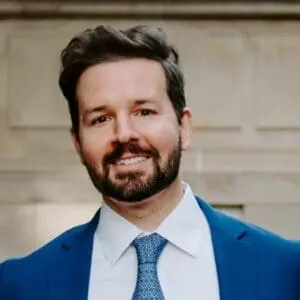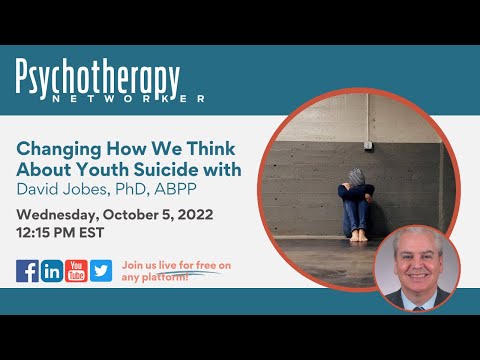In the solitude of his garage, high schooler Clay Jensen brushes the dust off his parents’ old Sony boom box and fiddles with the cassette player. His lean frame hunched over the table, he drops in a tape, presses Play, and waits.
“Hey, it’s Hannah,” a voice plays out over the speakers. “Hannah Baker. I’m about to tell you the story of my life. More specifically, why my life ended. And if you’re listening to this tape, you’re one of the reasons why.”
This is one of many chilling scenes in 13 Reasons Why, a Netflix series that debuted in late March and quickly went viral among teenagers and 20-somethings across the country. Chronicling the downward spiral of Clay’s classmate, 17-year-old Hannah Baker, the series shows us the final weeks before she takes her own life, mostly through Clay’s point of view. Its 13 episodes bare the depths of her suffering—replete with sexual assault, substance abuse, betrayal, character assassination, and cyberbullying—which culminates in a graphic scene of Hannah slitting her wrists in a bathtub. In a final act of vengeance, however, she’s recorded and mailed 13 audio cassettes to 13 classmates, each one describing how the recipient is indirectly responsible for her death.
With a generous budget, a bingeable format, and teen pop singer Selena Gomez at the helm as an executive producer, 13 Reasons Why has become one of Netflix’s most watched features. A tragedy for the digital age, most of the damage inflicted on Hannah’s reputation and psyche is through clicks, swipes, and shares—a mode of communication that no doubt resonates with its target audience. Another reason for its popularity among adolescents is that the topic of suicide hits close to home. According to the Centers for Disease Control and Prevention (CDC), more than 5,000 young people between grades 7 and 12 attempt suicide each day, making it the second leading cause of death for teens, behind accidents. And four out of five of these teens, the CDC adds, give clear warning signs.
Paul Tassi of Forbes, like many other reviewers, calls 13 Reasons Why Netflix’s “best new show in years,” but he adds a caveat: “I can see a few impressionable teens taking away the wrong message, that maybe they can do something like this too, and suicide can be a good form of revenge against those who have wronged you.” It’s exactly this notion that’s attracted the attention of suicide-prevention agencies, parent organizations, and school boards across the country, many claiming that 13 Reasons Why is glorifying suicide while offering little in the way of education about prevention. The series has revived a long-standing debate surrounding suicide contagion, the idea that being exposed to suicide or depictions of it increases the likelihood of copycat behavior. Recent articles in The Washington Post, The New York Times, USA Today, Newsweek, CNN, and other outlets have warned that the series might trigger an increase in suicides among young audiences.
“I’ve heard people express that any conversation [about suicide] is better than no conversation,” says Madelyn Gould, a professor of epidemiology in Columbia University’s psychiatry department, in a May interview with Teen Vogue. “I think that attitude is actually unfortunate,” she adds. “An inappropriate conversation can actually do some harm. Someone can watch Hannah and go, ‘Yeah, that’s me. . . . I can [commit suicide] too.” Gould is responsible for some of the deepest studies on suicide contagion to date, including an eight-year project that found a correlation between newspaper coverage of young adult suicides and subsequent attempts. Her research showed that the more prominent, sensationalistic, and detailed the coverage, the higher the death toll. Critics, however, say there’s little other research to support this. In fact, in 2001, James Mercy, the Director of the CDC’s Division of Violence Prevention, interviewed 153 survivors of attempted suicide and concluded that “exposure to accounts of suicidal behavior in the media were associated with a lower risk of suicide attempts.” Seeing media depictions of suicide, Mercy’s team added, might even have “protective” utility.
Others aren’t so convinced. In late April, Robert Avossa, superintendent of schools in Palm Beach County, Florida, wrote a letter to parents and teachers, noting a rise in the number of students who’d hurt themselves or threatened suicide after the Netflix series was released. And in May, Leigh Grasso, the curriculum director for the 22,000-student Mesa County Valley School District in Colorado, temporarily ordered school librarians to stop circulating 13 Reasons Why, the book the Netflix series was based on; she rescinded her order only after critics said it amounted to censorship. Other schools—in Maryland, New Jersey, Connecticut, and Ohio, to name a few—have issued warning letters to parents, the recommended approach seeming to heed the adage of “better safe than sorry.”
Several weeks after the series was released, the National Association of School Psychologists (NASP) sent a notice to school mental health professionals across the country, warning against allowing “vulnerable youth, especially those who have any degree of suicidal ideation” to watch the series. The letter included guidelines on talking to students who have seen it, making sure parents, teachers, and students are aware of suicide risk warning signs like “preoccupation with death in conversation, writing, drawing, and social media.” This marks the first time the association has released recommendations in response to a television show.
The following month, NASP collaborated with the American Foundation for Suicide Prevention (AFSP) and the American School Counselor Association, holding a webinar on dealing with the series. The three groups called the series’ release “a teachable moment,” to initiate conversation about suicide prevention and mental health. During the presentation, AFSP’s chief medical officer, Christine Moutier, cited qualities that she says make the film particularly dangerous: “dark, relatable, engaging” themes, a plot that “romanticizes suicide,” portrayal of suicide “as a solution,” and “missed opportunities for having an impact on prevention.”
Nevertheless, many therapists who specialize in working with young adults argue that the Netflix series does a public service by debunking many myths about suicide. Eric Beeson, a licensed professional counselor and online faculty member at The Family Institute at Northwestern University, says it counters the idea that teen suicide is an impulsive decision, without warning signals. As Beeson explains, Hannah’s story shows that “suicide can be a process, often the cumulative effect of multiple negative life experiences.” Another busted myth, he adds, is the notion that small words and actions—good or bad, like asking friends how they’re doing or spreading a rumor—won’t have big consequences. “This show really drives home the importance of being aware of our relationships,” Beeson says. “Many of the young adults I’ve spoken with who attempted suicide say they wanted to show other people that they hurt.”
Nekeshia Hammond, a psychotherapist in Brandon, Florida, points to another myth exposed by the series. “We tend to think that teens who die by suicide come from abusive homes, or that they have long trauma histories,” she says. “But as with a lot of teen suicide, that’s not the case in this show. Hannah’s parents were very supportive.” Hammond also believes the series debunks the idea that it’s easy for teens to talk about suicide: “Throughout the program, Hannah was walking around and smiling, when in reality she was dealing with a deep depression.”
As evidence that the series isn’t necessarily a danger to impressionable young people, Hammond cites the example of her teenage client who’d been having suicidal thoughts since elementary school. Like Hannah, the girl was a victim of bullying from classmates. “‘This show saved me,’” Hammond recalls the client saying. “She could relate to everything Hannah struggled with, and that helped her know she wasn’t alone, but after watching the graphic scene where Hannah takes her own life, this client told me that the actual act of suicide seemed too painful and disturbing for her to fathom anymore.”
In response to criticism, Netflix has created a website, 13reasonswhy.info, as a source for local mental health resources, and added content warnings to episodes featuring graphic scenes. It also made a 30-minute featurette, titled Beyond the Reasons, that includes interviews with cast members and mental health professionals. But it’s a brief observation from Katherine Langford, who plays Hannah, that’s likely to resonate most with teens viewing the video: “There’s life after high school. There’s life after that exam. There’s life after that party, or that photo, or that boy. There’s always going to be more.”
The debate surrounding the series and suicide contagion isn’t likely to subside any time soon. In May, the creators of 13 Reasons Why announced that the series would be returning for a second season—no surprise, given its popularity. Netflix announced that the new show will pick up in the aftermath of Hannah Baker’s death and detail “the start of the characters’ complicated journeys toward healing and recovery.” Officials working with suicide prevention groups have promised greater collaboration between mental health professionals and the show’s producers.
Chris Lyford
Chris Lyford is the Senior Editor at Psychotherapy Networker. Previously, he was assistant director and editor of the The Atlantic Post, where he wrote and edited news pieces on the Middle East and Africa. He also formerly worked at The Washington Post, where he wrote local feature pieces for the Metro, Sports, and Style sections. Contact: clyford@psychnetworker.org.












